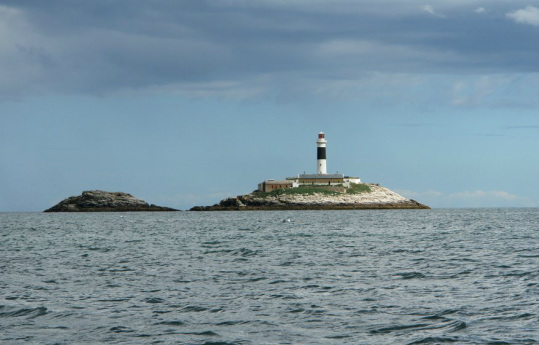|
It’s this time of the year again when a number of our UK birds are winging their way back from their wintering grounds such as Africa or the Antarctic! The arrival of our migrant seabirds to our coasts marks the end of spring and the start summer! As a result, in advance of their return and with added funds from our LIFE project, wardens have been able to start preparing to the colonies earlier in the season. This includes clearing the rampant vegetation growth and discouraging large gulls from taking over tern’s nesting areas. Many offshore colonies such as Rockabill, Coquet Island and the Skerries have residential wardens living on the remote islands throughout the season. They use the former quarters of lighthouse keepers and monitor the breeding terns using telescopes and observation hides. Due to the tern colonies being understandably coastal based, both the wardens and seabirds have to endure unseasonable weather. Over the years, even equipment and infrastructures like hides used across all of our project sites cannot withstand the passage of time and constant exposure to sea salt. The replacing of such infrastructure is not always easy since the terrain is rugged and separated from the mainland by water. It’s incredibly important to get this done in advance of the season as without a working hide, the wardens would not be able to monitor the colony including identifying what the terns feed their chicks and the fates of individual nests. All of this is used to help direct the future management and protection of the terns. At some sites, it is possible to bring the dissembled parts of an observation hide across by boat, but in case of one of our Anglesey sites, it was decided that a helicopter would be the only method to transport the new hide. It wasn’t however as easy as it sounds; with many previous attempts abandoned due to poor weather, the end of April was our last chance. On the day, poor weather delayed the trip by about three hours! Fortunately, once the helicopter crew made it to the island, it all went smoothly. We also managed to get the old hide off the island, though the helicopter had to drag it through the sea to stop it spinning! This puts things in perspective though, how something quite simple on mainland can be much more difficult to do on rocky shores. We hope that the hide will not require replacing for many years to come.
With the new hide in place, the wardens will make full use of it for the monitoring of terns, which have already started to settle and will soon be on eggs!
0 Comments
 Roseate Tern (c) BirdWatch Ireland (photo taken under NPWS license) Roseate Tern (c) BirdWatch Ireland (photo taken under NPWS license) Located 7km off the County Dublin coast, the island of Rockabill is an internationally important site for Roseate Terns since it supports over 80% of its north-west European population!! It also supports other important and stunning breeding seabirds including common tern, Arctic tern, kittiwake and black guillemot. The island is managed by BirdWatch Ireland and no landing is permitted in order to limit disturbance to these sensitive nesting birds. There is a small team of dedicated wardens who live on the island monitoring these seabirds for the entire breeding season. Recently they have just completed their full nest census which took two days to completed! This meant checking out all the nest boxes including nooks and crannies for nesting pairs and eggs. "Their hard work has paid off with a fantastic count total of 1,556 Roseate Tern nests on Rockabill which is increase of over 150 nests from last year. Such a big increase further cements Rockabill's status as the largest Roseate Tern colony in Europe and is down to a lot of hard work from all of the wardens and Birdwatch Ireland staff who have worked here over the years." "Around 700 of those 1556 nests are in nestboxes, again proving their value and importance to the species continued growth. We got around 100 new nestboxes this year thanks to funding from the EU LIFE project, and will hopefully continue to add more and more in the coming years." All this information is from their regularly updated 'Rockablog' which will enthrall you with the tales of these stunning birds - check it out! http://rockabillterns.blogspot.co.uk/2016/06/rockabill-roseate-tern-count-2016.html |
More Blogs to Read
AuthorThis blog is maintained by various people from the project team. Archives
August 2020
Categories
All
|
Roseate Tern LIFE Project is supported by the LIFE Programme of the European Union
LIFE14 NAT/UK/000394 ROSEATE TERN
LIFE14 NAT/UK/000394 ROSEATE TERN









 RSS Feed
RSS Feed